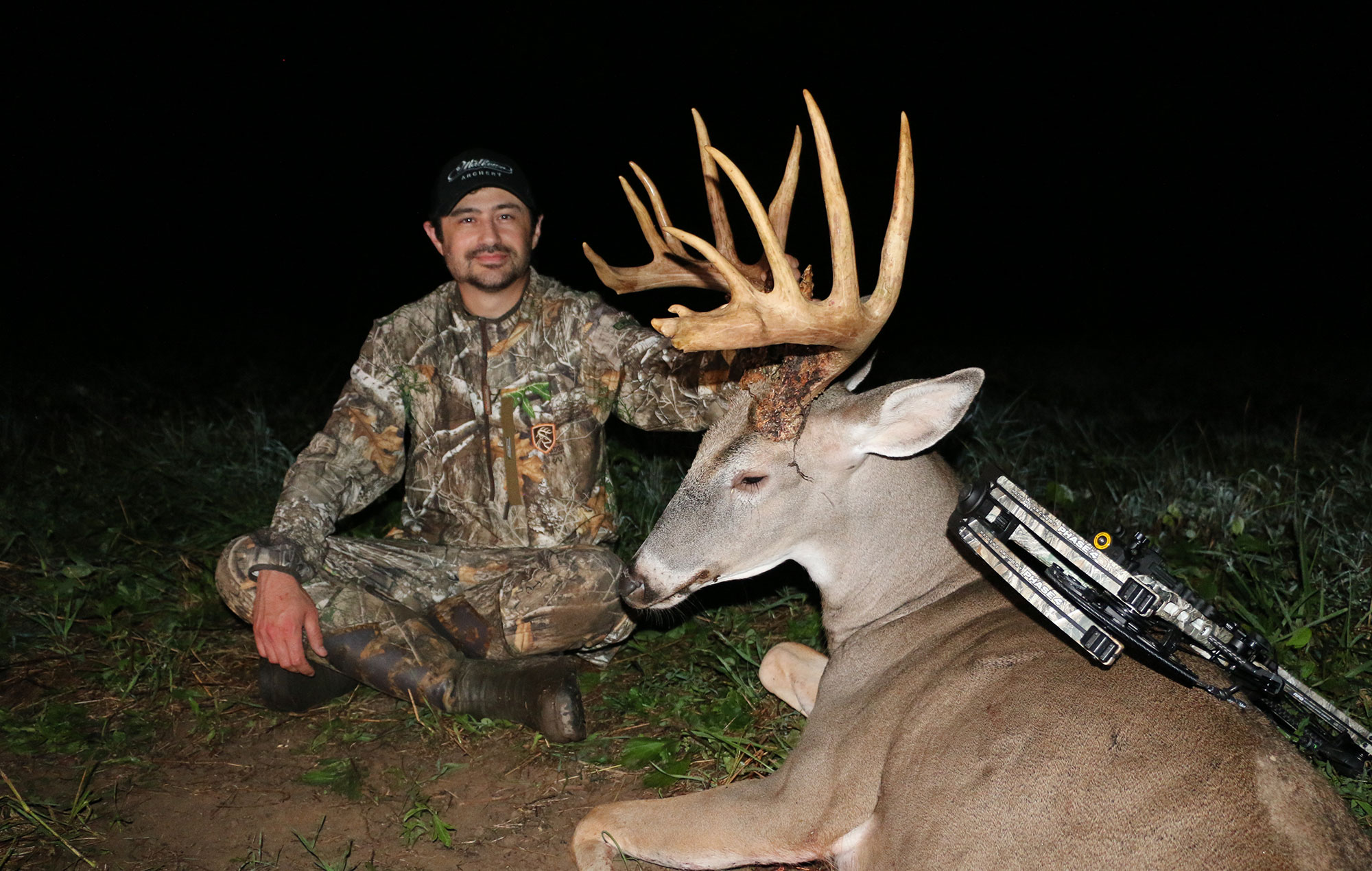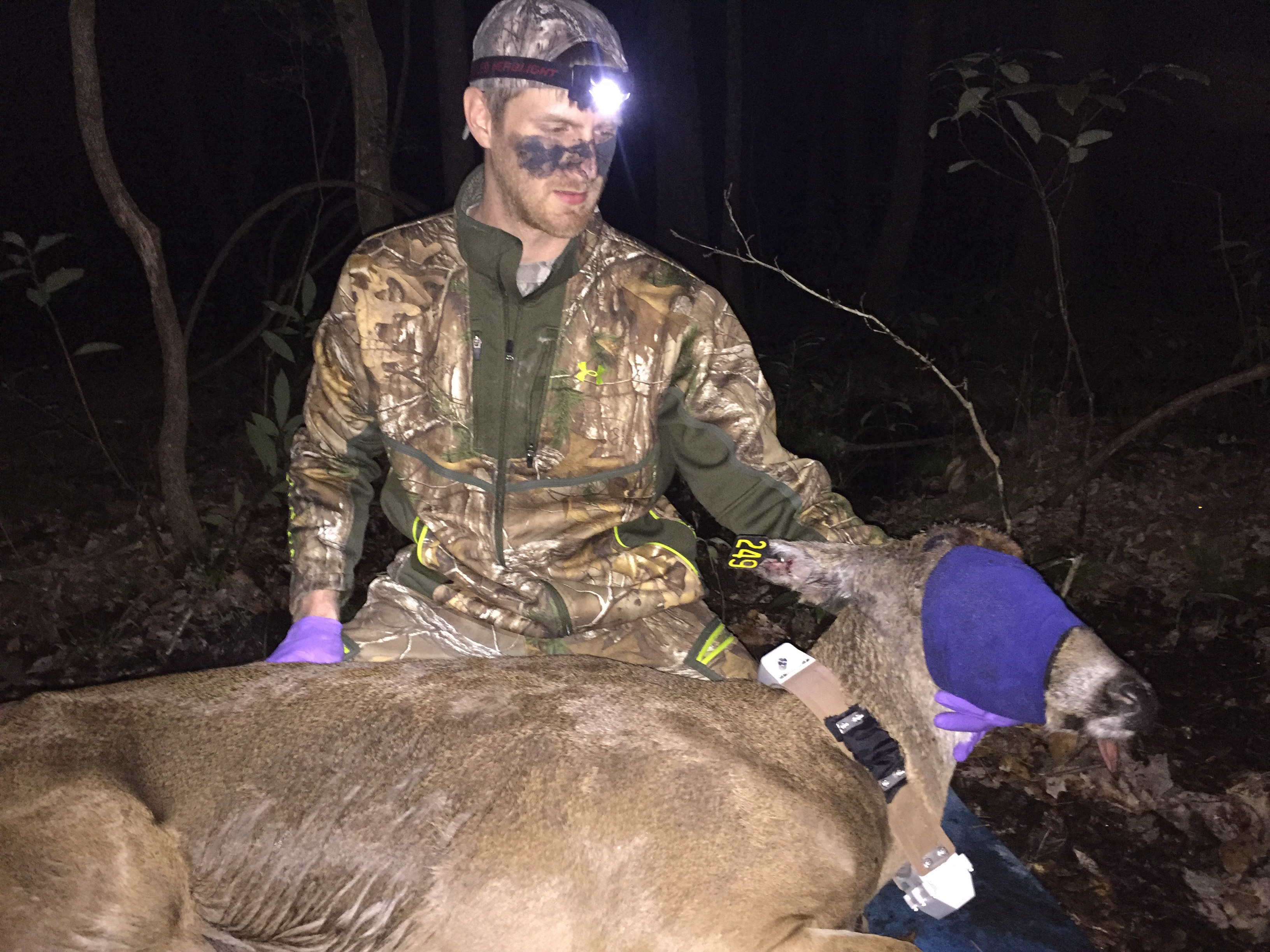Podcast: Advanced Trail Camera Strategies for Hunting Mature Bucks
There’s a whole ton of information out there about how trail cameras work (or don’t work), which are the best trail cameras, and how to mount them properly. But there’s not enough good content about how to actually implement trail cams into a comprehensive hunting strategy.
I’m talking about developing a camera strategy that will help you make decisions on where and when to hunt. The point is to use these advanced trail camera tactics so that you’ll be more likely to actually shoot that big buck in your phone’s photo gallery.
So for this episode of The Outdoor Life Podcast I interviewed whitetail deer hunting fanatic and outdoor writer Josh Honeycutt who shares his strategy for predicting a buck’s daylight movement based on wind direction. Then I interviewed whitetail researcher Dr. James Johnson, who has conducted scientific trail camera studies that have required him to run 300 cams a year. Johnson explains how you can condition deer to your cameras (so you don’t spook them) and describes how he uses cameras for his own hunts each fall.
Pattern Daylight Movement Based on Wind Direction

One of the most difficult aspects of hunting a mature buck is predicting when and where he’ll move during daylight. Honeycutt approaches this challenge by logging every daylight (or near daylight) picture of a target buck. He notes the timestamp, location, and the specific wind direction for each photo.
“What that allows me to do is see which particular wind directions that buck likes to pass through the area with,” Honeycutt says. “I’ve noticed that with some bucks, patterns emerge. With others it’s more random. But with the last few bucks that I’ve tagged there have been some significant correlations on wind directions they liked to pass through the area with and then there were wind directions that they never would.”
Honeycutt uses historical wind direction data in Weather Underground to ensure he has an accurate wind direction matched with each daylight buck photo. Then if he notices a pattern, he’ll target a buck based the wind direction the buck likes in the location where it popped on camera during daylight.
Hunt Fringe Winds
Because bucks like to move with the wind in their favor (they typically angle into the wind), implementing this strategy means that you’ll often “let bucks have the wind,” Honeycutt says.
In other words, you’ll end up hunting in places where your scent will be blowing toward approaching deer. You’ll need to position your stands so that your scent will drift just-off from the trail. For example, if the deer is approaching from the northeast, your scent might be blowing directly east. And ideally, you’ll shoot the buck before he enters your scent cone.
“I’ve learned this from other hunters who are better than me, but I started having more success when I began hunting winds that weren’t perfect for me, or even good for me. They’re more in the deer’s favor than in my favor” Honeycutt says. “That’s a high-risk, high-reward tactic … but the way I’ve decreased the odds of deer smelling me is really knowing the property.”
When you have a deep understanding of how deer move through an area, you can be more confident in precise stand placements. The other key is implementing this strategy when you have a consistent wind direction and wind speed. Shifty fringe winds spell trouble.
You can, of course, use scent control strategies to help prevent you from being busted, but just remember that you’ll never be able to completely fool a whitetail’s nose.
What’s cool about Honeycutt’s wind direction strategy is that it can help you develop long-term deer movement patterns. You might start to see that with any given wind direction, bucks will tend to move through a specific area during daylight — year after year.
“The property is the property, and I think the bulk of the deer herd learns how to use the wind to their favor on that property,” Honeycutt says. “What might be different, in my experience, is that some bucks are more or less likely to put emphasis on that [wind direction]. Some deer are a little more carefree than others.”
Condition Deer to Your Cameras
Dr. James Johnson, a researcher and wildlife biologist with the University of Georgia, has lots of experience with how deer react to trail cameras. He’s been in the stand darting deer (for research) when cameras have fired and he’s observed deer lock their focus on that camera. This has happened with both white flash cameras and IR cameras. But just because deer sense the trail camera doesn’t mean that they’ll spook.
“Deer are going to pick up on that camera’s presence,” Johnson says. “They’re going to know that we were in there, they are going to know that the camera is there. But deer are reactionary animals. And if there is no negative stimuli with that [camera] interaction they might get a little jumpy at first … but the more they interact with it, the more comfortable they’re going to be.”
Johnson says that over time cameras become part of the environment for deer. Whitetails become conditioned to the camera’s flash and shutter. Changing up those cameras, however, can put deer on alert again.
Johnson has an anecdote where he and a buddy were targeting an old buck on a property they hunt in Georgia. The only place they could logically hunt the buck was over a feeder in a swamp, and of course, they had a trail camera aimed at it. The camera had been out all summer in photo mode, and without thinking much about it, Johnson switched the trail camera to video mode when they started hunting. After an evening sit, he was shocked by how deer reacted to the camera when he reviewed footage the next morning.

Photo courtesy James Johnson
“When I looked at the app the next morning, I realized I had left the camera in video mode and … the [buck] had come into that feeder [later that night] and I had video of him but he was absolutely spooked,” Johnson says. “The way they were acting and staring at the camera it was pretty clear to me that this camera was emitting a noise or they could sense the illumination or something. They were absolutely wired. They didn’t feed, they mulled around 30 yards behind [the feeder] and then they left the area.”
Interestingly, Johnson didn’t have an issue spooking the buck off that camera when it was in photo mode. The takeaway here is that once deer are conditioned to a trail camera, even a small change — like switching settings, in this case — could spook them.
Utilize Stationary Cameras and Roving Cameras
During the fall, Johson gets more aggressive with his trail cameras. He has a two-part approach. He leaves some cameras in place all season on key feeding areas: food plots, productive oaks, and ag fields.
Then he has a flexible set of cameras that he moves around in order to pinpoint buck movement.
“If I get a picture of a mature buck out on a food plot at night, I’ll use roving cameras to work my way back to try to pinpoint where he [enters the food plot and beds],” Johnsons says.
Johnson will sometimes switch cameras around weekly until he has a buck figured out. When Johnson moves cameras he tries to be as scent-free as possible and avoids touching vegetation.
“Just bounce that camera around until you can figure out where they’re entering food plots and leaving beds.”
Read Next: Best Trail Cameras
Then during the rut, it’s all about identifying the key feeding areas for does. Yes, this strategy has tradeoffs — the more you move cameras, the more likely you are to spook deer — but during the rut when deer are changing up their movement patterns, the risk is worth the reward.
The post Podcast: Advanced Trail Camera Strategies for Hunting Mature Bucks appeared first on Outdoor Life.
Source: https://www.outdoorlife.com/hunting/advanced-trail-camera-tactics/



